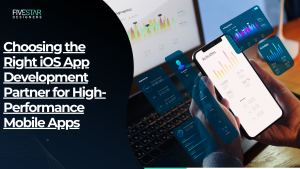Mobile applications have become an integral part of our daily routine in today’s world. Due to the growing demand for mobile apps, it is now vital for businesses to comprehend the significance of a mobile app engagement strategy. A mobile app engagement strategy helps businesses create a more meaningful relationship with their customers, leading to increased customer loyalty, higher retention rates, and increased revenue.
This blog will explore how businesses can increase mobile app engagement strategies to drive more user engagement and revenue.
Read more about: Mobile App Development Company in UK
What is Mobile App Engagement Strategy?
Mobile app engagement strategy refers to businesses’ tactics and techniques to encourage users to engage with their mobile apps. A successful mobile app engagement strategy focuses on creating a meaningful and personalized user experience, ultimately leading to increased user engagement.
How to Increase Mobile App Engagement Strategy?
Personalization
Personalization is one of the key elements of a successful mobile app engagement strategy. Businesses can personalize the user experience by providing customized content, notifications, and recommendations based on user behavior.
Gamification
Gamification is another effective technique to increase mobile app engagement. By adding game-like features such as rewards, badges, and levels, businesses can incentivize users to engage more with the app.
To gamify your app, you must identify the core user actions you want to incentivize. For example, a fitness app can award badges, rewards, or levels for hitting daily goals or completing challenges. This can encourage users to use the app regularly and achieve their fitness goals.
Moreover, it’s essential to test and iterate on your gamification strategy. Use in-app analytics or user feedback to understand how users interact with the game elements. This can help you optimize your strategy and increase user engagement further.
Push Notifications
Push notifications are a powerful tool to increase user engagement on the app. Businesses can use push notifications to send users personalized messages, reminders, and updates. However, it is important to use push notifications sparingly, as too many notifications can lead to user frustration.
To use push notifications effectively, you must segment your users based on their behavior and preferences. For example, a retail app can send notifications to users who have abandoned their shopping cart or to users who have shown interest in a particular product category. This can help increase user engagement and conversion rates.
User Onboarding
User onboarding refers to introducing the user to the application and its features. A well-designed onboarding process can help users understand the app’s value proposition and increase engagement. Businesses can use interactive tutorials, videos, and tooltips to guide users through the app’s features.
Social Integration
Integrating social media features into the app can increase user engagement by allowing users to share their experiences and connect with other users. Social integration can also help businesses to reach a wider audience through social media shares and referrals.
Feedback Mechanism
Providing users with feedback can help businesses improve the app’s features and user experience. By collecting user feedback, businesses can understand user needs and pain points and make the necessary improvements to increase user engagement.
Personalized In-App Messages
In-app messaging is a powerful tool to deliver personalized messages to users based on their behavior and interests. By using personalized in-app messages, businesses can encourage users to take specific actions, such as purchasing or completing a task.
A/B Testing
A/B testing is comparing and evaluating the performance of two different versions of an application or feature to determine which one performs better. By using A/B testing, businesses can identify the features that resonate with users and increase engagement.
Regular App Updates
Regular app updates are essential to keep users engaged and interested in the app. By adding new features and fixing bugs, businesses can provide a better user experience and keep users returning to the app.
Use of In-App Analytics
In-app analytics is a powerful tool that provides businesses with insights into user behavior and engagement within the app. By tracking user activity, businesses can identify user behavior patterns, understand user preferences and optimize the app’s features to improve user engagement. In-app analytics also helps businesses to identify and fix bugs, improve user experience, and make data-driven decisions.
To use in-app analytics effectively, you must define key performance indicators (KPIs) aligning with your business goals. These KPIs can include metrics such as user retention, user acquisition, or revenue per user. Use these KPIs to set benchmarks and track your progress over time.
Moreover, segmenting your data based on user behavior and preferences is essential. This can help you identify patterns and insights to inform your engagement strategy further. For example, you can identify which user segments are most engaged with a particular feature and use this insight to personalize content or notifications for that segment.
Personalized Rewards and Loyalty Programs
Offering personalized rewards and loyalty programs to users can be an effective way to increase user engagement. By providing personalized rewards based on user behavior and preferences, businesses can incentivize users to engage more with the app. Loyalty programs also help businesses to retain existing users, increase customer loyalty and drive more revenue.
Integration with Wearables
Integrating the app with wearables such as smartwatches and fitness trackers can increase user engagement by providing a seamless and integrated user experience. By leveraging wearable technology, businesses can provide users with real-time updates and personalized recommendations and incentivize users to stay active within the app.
User-Generated Content
User-generated content effectively increases user engagement and creates a sense of community within the app. Businesses can create a sense of belonging and increase user engagement by allowing users to share their experiences and opinions within the app. User-generated content also helps businesses generate social proof, leading to increased user acquisition and retention.
Seamless Onboarding
A seamless onboarding process ensures users can easily understand and navigate the app’s features. Businesses can reduce user friction and increase user engagement by designing a simple and intuitive onboarding process. A well-designed onboarding process can also help businesses to showcase the app’s value proposition and encourage users to engage more with the app.
Use of Social Proof
Social proof is a powerful tool that businesses can use to increase user engagement. By showcasing positive user reviews, ratings, and testimonials within the app, businesses can increase user trust and encourage users to engage more with the app. Social proof can also help businesses to attract new users and increase user retention.
Final Thoughts
In conclusion, a mobile app engagement strategy is crucial for businesses to drive user engagement and revenue. By focusing on personalization, gamification, push notifications, user onboarding, social integration, feedback mechanism, personalized in-app messages, A/B testing, and regular app updates, businesses can create a more meaningful relationship with their users and increase user engagement. By implementing these strategies, businesses can ensure that their mobile app remains relevant and valuable to their users, leading to increased revenue and customer loyalty.




